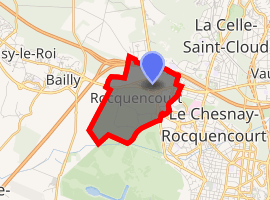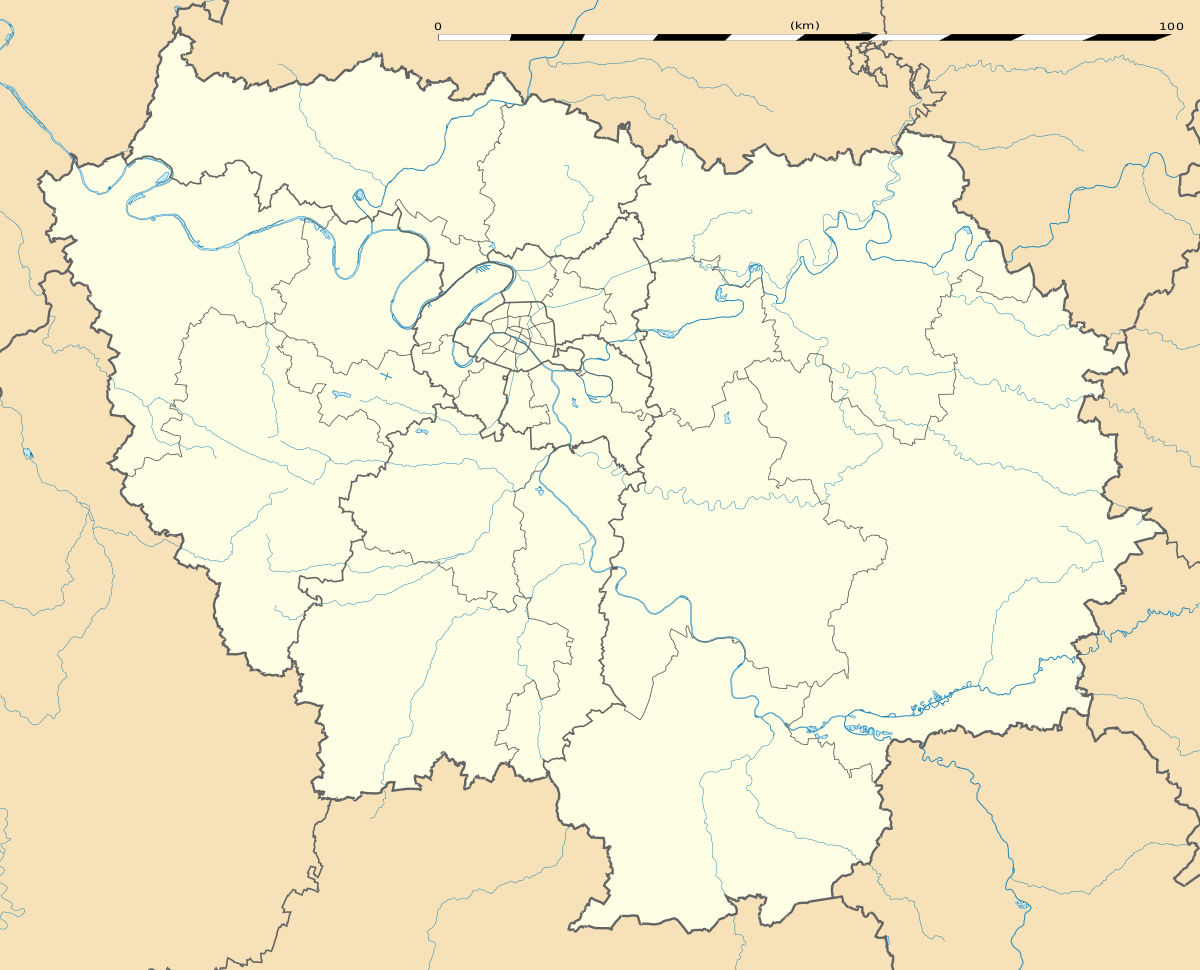Rocquencourt
Rocquencourt (French: [ʁɔkɑ̃kuʁ] (![]()
Rocquencourt | |
|---|---|
Part of Le Chesnay-Rocquencourt | |
Town hall | |
 Coat of arms | |
Location of Rocquencourt 
| |
 Rocquencourt  Rocquencourt | |
| Coordinates: 48°50′13″N 2°06′42″E | |
| Country | France |
| Region | Île-de-France |
| Department | Yvelines |
| Arrondissement | Versailles |
| Canton | Le Chesnay |
| Commune | Le Chesnay-Rocquencourt |
| Area 1 | 2.78 km2 (1.07 sq mi) |
| Population (2017)[1] | 3,474 |
| • Density | 1,200/km2 (3,200/sq mi) |
| Time zone | UTC+01:00 (CET) |
| • Summer (DST) | UTC+02:00 (CEST) |
| Postal code | 78150 |
| Elevation | 114–179 m (374–587 ft) (avg. 150 m or 490 ft) |
| 1 French Land Register data, which excludes lakes, ponds, glaciers > 1 km2 (0.386 sq mi or 247 acres) and river estuaries. | |
The commune is mainly known as the location of a research unit of INRIA (in the Domaine de Voluceau, formerly Camp Voluceau, used by SHAPE) as well as a freeway exchange known as the Rocquencourt Triangle (triangle de Rocquencourt, junction of the A12 autoroute and the A13 autoroute), which is often mentioned in traffic news.
History
On 1 July 1815, Napoleon's Grande Armée fought its last battle in Rocquencourt and Le Chesnay. After the defeat of Waterloo on 18 June 1815, Grouchy's army withdrew to Paris via Namur and Dinant, reaching Paris on 29 June, a few days before the Prussians, who camped at Versailles.
While negotiating the final armistice, Exelmans was ordered to attack the Prussians at Versailles on 1 July 1815. Under attack the Prussians retreated from Versailles and headed east, but were blocked by the French at Vélizy. They failed to re-enter Versailles and headed for Saint-Germain-en-Laye. Their first squadron came under fire at the entrance of Rocquencourt and attempted to escape through the fields. They were forced into a small, narrow street in Le Chesnay and killed or captured. However, the main body of the Prussian army succeeded in reaching Saint-Germain. (From Presentation of Rocquencourt.)
Points of interest
See also
References
- Téléchargement du fichier d'ensemble des populations légales en 2017, INSEE
- Arrêté préfectoral 29 November 2018 (in French)
External links
| Wikimedia Commons has media related to Rocquencourt (Yvelines). |
- Rocquencourt city council website (in French)